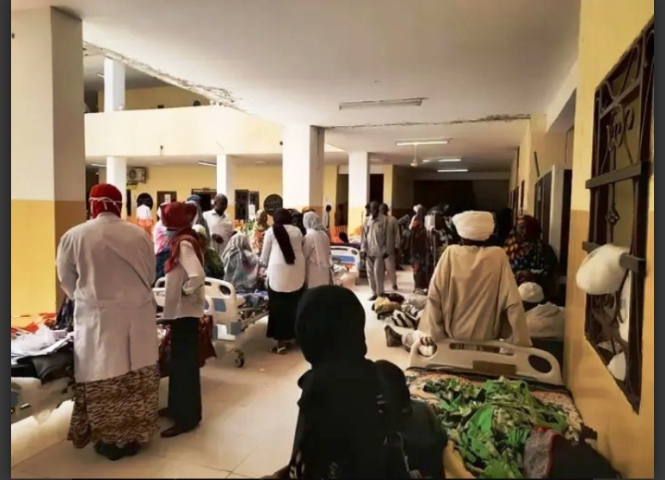By Adeyemi Adekunle
The World Health Organization (WHO) has issued a dire warning about the increasing number of attacks on hospitals and healthcare facilities in Sudan, exacerbating the humanitarian crisis in the war-ravaged nation. As fighting between the Sudanese army and paramilitary forces intensifies, the healthcare system is on the brink of collapse, further endangering millions of lives.
Since the outbreak of war in April 2023, WHO has documented 82 attacks on healthcare facilities, with a notable surge in recent weeks. “Seventeen of these attacks have occurred in the last six weeks alone,” reported Hanan Balkhy, the WHO’s Eastern Mediterranean regional director, during a video conference on Wednesday.
These assaults have not only disrupted medical services but have also instilled fear among healthcare workers, limiting their ability to provide critical care.
The ongoing conflict between the regular army, led by General Abdel Fattah al-Burhan, and the paramilitary Rapid Support Forces (RSF), commanded by his former deputy Mohamed Hamdan Daglo, has plunged Sudan into a humanitarian nightmare.
The violence has claimed tens of thousands of lives and displaced over ten million people, creating one of the most severe displacement crises globally, according to the United Nations.
The collapse of Sudan’s healthcare system has facilitated the rampant spread of diseases such as cholera, malaria, and meningitis.
“The spread of these diseases is alarming,” Balkhy emphasized, highlighting the compounded health risks facing the population. The breakdown in medical services, coupled with the destruction of infrastructure, has left millions without access to essential healthcare, exacerbating the public health crisis.
The delivery of humanitarian aid in Sudan faces significant hurdles, including administrative red tape, security threats, and logistical challenges. Shible Sahbani, WHO’s representative in Sudan, noted the formidable obstacles hindering relief efforts.
“Despite these challenges, WHO has managed to distribute 510 tons of medicines and aid materials between January and July,” Sahbani stated.
He noted that two trucks recently reached North Darfur from Chad, and seven more are en route to Darfur from Port Sudan, highlighting the organization’s ongoing efforts to provide relief amidst the chaos.
Hunger remains a critical issue driving Sudanese citizens to flee the country, with many seeking refuge in neighboring Chad. Sahbani pointed to testimonies from asylum-seekers who cited hunger as the primary motivation for their flight. The crisis is compounded by acute food insecurity affecting nearly 26 million people, or slightly more than half of Sudan’s population, according to a recent UN-backed report.
Humanitarian agencies face significant challenges in collecting reliable data on the ground, complicating efforts to declare an official famine in Sudan. The lack of accurate data masks the true extent of the crisis, making it difficult to mobilize adequate resources and international support.
Both the Sudanese army and the RSF have been accused of obstructing humanitarian aid, further exacerbating the suffering of the civilian population.
The international community has been urged to intensify efforts to address the crisis in Sudan. Humanitarian organizations call for increased funding, more robust logistical support, and greater political pressure on the warring parties to allow unrestricted access to aid.
The obstruction of aid not only violates international humanitarian law but also perpetuates the suffering of millions of innocent civilians caught in the crossfire.
As the conflict shows no signs of abating, the plight of Sudan’s population grows increasingly desperate. The destruction of healthcare facilities, combined with the spread of disease and acute food insecurity, presents a multifaceted crisis that demands urgent and coordinated international action.
The WHO and other humanitarian organizations continue to work tirelessly to deliver aid and medical supplies, but the scale of the crisis requires a concerted global response.




